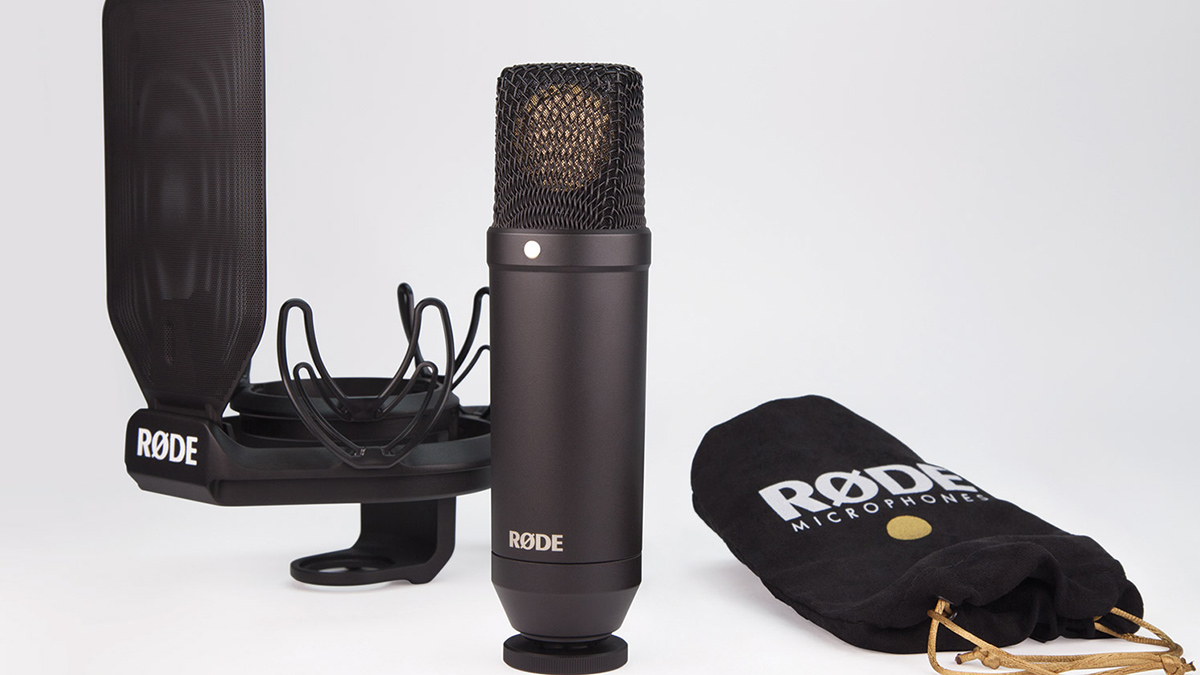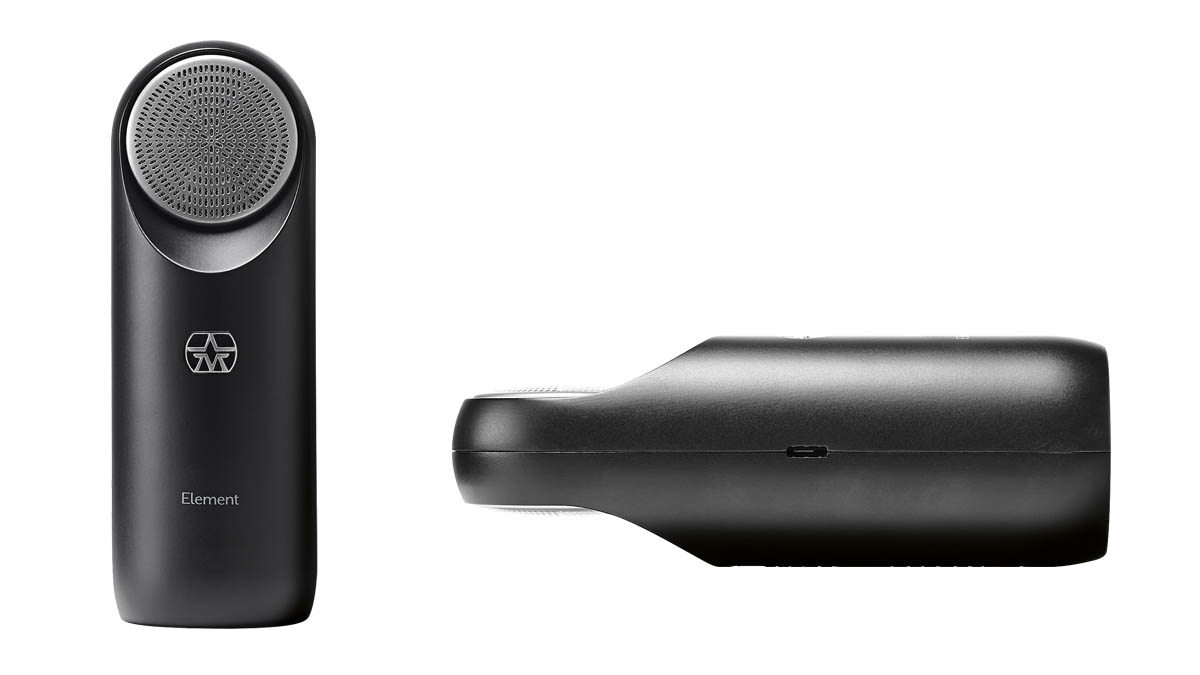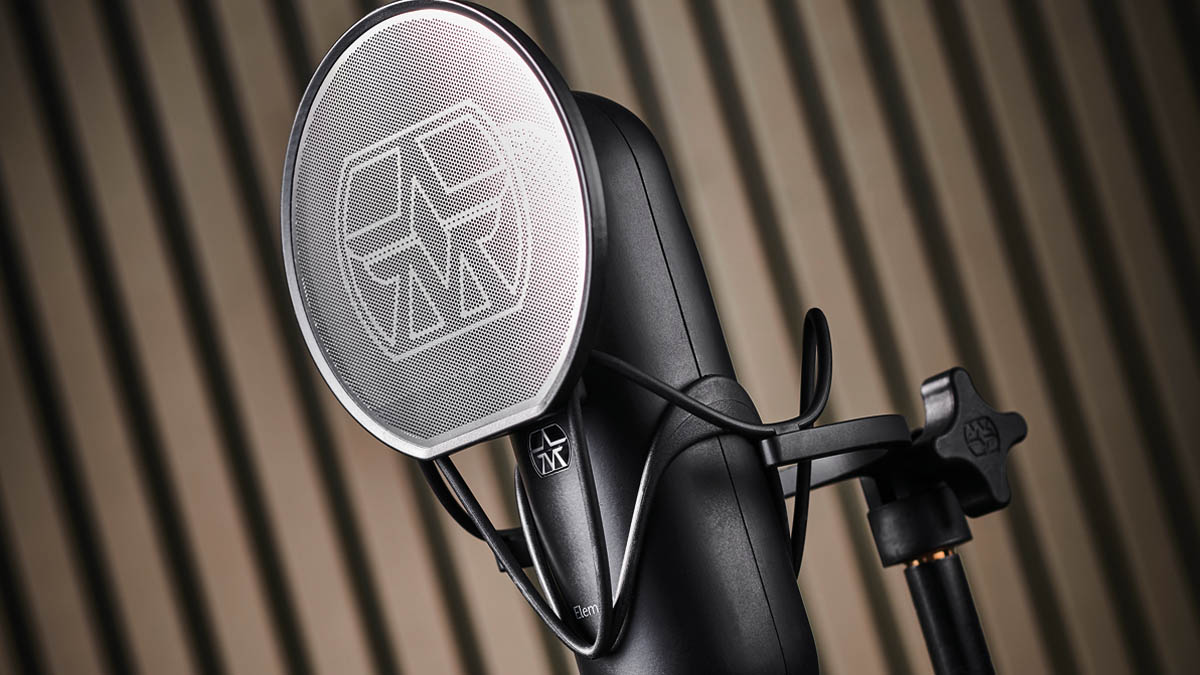MusicRadar Verdict
At this price, there’s really nothing that comes close to the Element. Clarity, breadth of response and tonal characteristics are all there.
Pros
- +
Noise free.
- +
Excellent clarity.
- +
Waveguide keeps mic focused.
Cons
- -
No onboard controls for pad or high pass.
MusicRadar's got your back
What is it?
We'll start this review with the conclusion that the Element is a total success, that easily outperforms microphones that cost double and even triple the price. There, we’ve said it.
There will be mic elitists out there who doubt the capabilities of such an accessible tool and while they are correct that a high-end valve mic may produce slightly more pleasing results, the differences will be obvious to only a very few. So, what makes the Element so good?
First, Aston’s Rydion capsule, which makes for a design that offers a combination of the warmth, focus, clarity and range of condensers, ribbon and dynamic microphones (hence composite name), which makes it perfectly suited for use recording vocals, acoustic instruments, drums and pianos.
The Aston Element has proved a well-rounded, versatile microphone that can turn its hand to many tasks. It excels at capturing vocal and acoustic performances but can just as easily be put to use as a drum mic
Placement of the mic for these tasks will change the character of the performance but it’s more a case of added warmth for closer proximity than a drop off when placed further. This is particularly noticeable when recording acoustic guitar and vocals.
The proximity effect is barely noticeable when recording louder sources like electric guitar, which highlights the delicacy of the Element, possibly enhanced by the waveguide that helps funnel certain sources’ output into the capsule.
Performance and verdict
The Element has a wide response with a tighter focus at closer proximity that warms the tones, without colouring it too much. This warmth is where high-end valve mics excel but it’s a trade-off, where personality can overpower true reproduction, and the Aston delivers as close as you could hope for and its warmth runs broad, making it a real workhorse.
If there’s an area where the Element could do with a little help it’s with the top end, which can feel just a touch empty. It never sounds stiff or brittle and a gentle lift around 15-16k sorts this.
Want all the hottest music and gear news, reviews, deals, features and more, direct to your inbox? Sign up here.
The real key to the result of Aston’s development is its drive to include its trusted user base to give feedback at key stages, helping make the design into the crowd-pleaser it is sure to be. This has meant that the Element can hold its own against very popular options like Shure’s SM7B.

• Rode NT1
The performance from this affordable large diaphragm condenser is truly exceptional, making it a smart choice for vocals, guitars and more.
• sE 2200a MkII
More stylish and more flexible than its predecessor, the MkII will surely be an instant success.
With the community behind it, the one area that may divide opinion is the visual design, which some wits have compared to a showerhead. We quite like the looks, with a gentle purple light indicating power.
Also, the lack of pad or high-pass might bother some. The build is light but rugged and the housing connects to a bespoke pop filter and suspension by clip and magnet, which we're all for.
All in all, the Aston Element has proved a well-rounded, versatile microphone that can turn its hand to many tasks. It excels at capturing vocal and acoustic performances but can just as easily be put to use as a drum mic. It’s warm without colouring tones overly so may not win friends who crave mojo.

But for realistic reproduction with just a touch of magic, the Element has it covered. We can see this easily replacing much more expensive tools But for realistic reproduction with just a touch of magic, the Element has it covered.
We can see this easily replacing much more expensive tools and the build feels like it will last until it ends up in the ‘classic retro mics of old’ list posts 30 years from now. A true workhorse.
MusicRadar verdict: At this price, there’s really nothing that comes close to the Element. Clarity, breadth of response and tonal characteristics are all there.
The web says
“This mic is a true all-rounder... It has the delicacy and detail of a condenser along with the high sound-pressure level handling capabilities of a rugged dynamic design, all of which means you can use it close to loud electric guitar amplifiers and drum kits, as well as softer instruments.“
MusicTech
“The Element is like a breath of fresh air in the affordable microphone market: a capable all‑rounder that won’t disgrace itself when heard alongside much more expensive alternatives. It has its own sonic character, which I’d characterise as full, smooth and detailed, but those attributes make it surprisingly versatile.“
Sound On Sound
Hands-on demos
Podcastage
PMT TV UK
Anton Browne
Specifications
- KEY FEATURES: Cardioid pattern, Magnetic clip-on pop shield and shockmount, Phantom power needed
- CONTACT: Aston Mics
